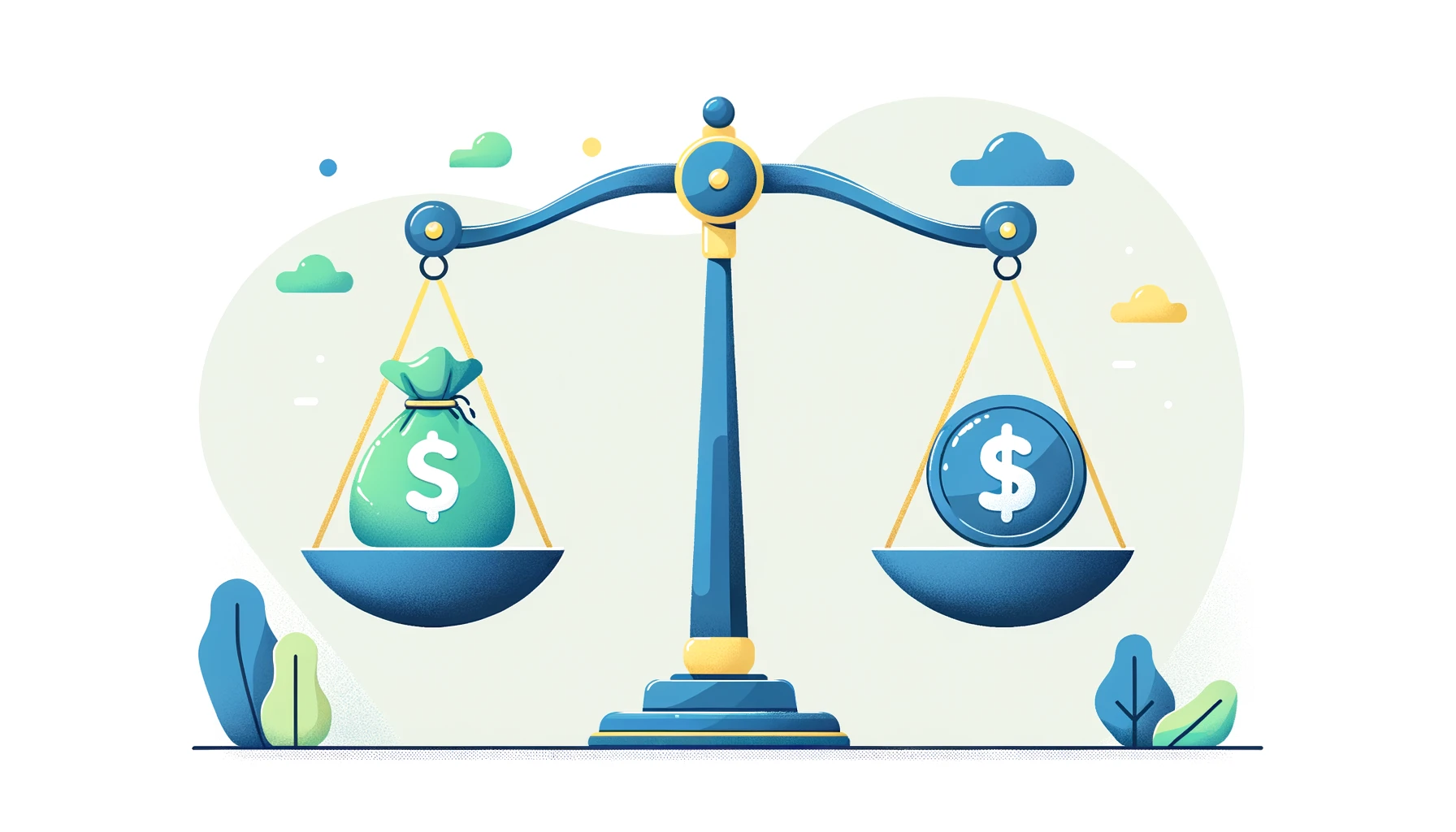What is a Stablecoin? Exploring Its Purpose, How It Works, and Benefits
Stablecoins have become a pivotal component in the digital currency realm, engineered to address the notorious fluctuations that afflict digital currencies like Bitcoin. These distinct digital currencies achieve steadiness by anchoring their worth to external benchmarks such as traditional currencies, commodities, or other economic assets. A notable instance is a steady coin linked to the US dollar, where each unit consistently maintains a worth of $1. This linking system ensures price steadiness, rendering stablecoins more viable for routine dealings and economic services on the distributed ledger.
However, despite their steadiness promise, steady coins are not devoid of controversy. They have been implicated in several prominent digital currency collapses, attracting skepticism from various sectors. Critics contend that while stable currencies aim to offer dependability, the systems sustaining their peg can occasionally falter, leading to considerable economic upheaval. This dichotomy underscores the complex nature of stable-coins promising steadiness and dependability while navigating the same unpredictable waters that influence the broader digital currency sector.

What is Stablecoin?
In the constantly evolving world of digital currencies, stable-coins have emerged as a significant advancement, addressing the functional issues of transacting with digital currencies. Unlike their volatile counterparts, steady coins provide a solution to the dramatic price swings that can occur within hours, a common trait of popular digital currencies like Bitcoin.
Bitcoin, for example, can experience double-digit percentage fluctuations in worth within a short period. These fluctuations pose a significant risk for everyday dealings. Consider buying a $3 cup of coffee with Bitcoin: while the digital currency might be worth $3 at the moment of purchase, it’s worth could easily plummet to $2 or surge to $5 by the time you leave the café. Such unpredictability discourages both consumers and merchants from using digital currencies for routine dealings.
Stable-coins aim to mitigate this risk by combining the reliability of traditional currencies with the technological benefits of distributed ledger. They operate on distributed ledger networks, which are celebrated for their enhanced safety, clarity, effectiveness, and transaction speed. Concurrently, stable currencies are linked to real-world holdings like the US dollar, maintaining a steady worth that mirrors traditional currencies. This dual functionality positions steady coins as an effective bridge between conventional financial systems and the burgeoning digital currency sector.
Another notable advantage of stable currencies is their ability to simplify the exchange process between traditional and digital currencies. Typically, converting dollars to digital currency and vice versa is a slow and costly endeavor, complicating trading activities for investors. Steadycoins, being digital currencies themselves, streamline this process by serving as stable trading pairs for more volatile tokens like Bitcoin. This effectiveness makes them an attractive option for traders seeking to navigate the digital currency sector with greater ease and reduced economic friction.
Types of Stablecoins
There are three main categories of stable currencies, each with its own method of maintaining steadiness: fiat-collateralized stablecoins, crypto-collateralized stablecoins, and algorithmic stablecoins.
Fiat-collateralized Stablecoins
Fiat-collateralized stablecoins are the simplest to understand. They are backed by traditional currencies. For every steadycoin in circulation, an equivalent amount of fiat currency is held in stock. Think of it as a one-to-one relationship. If you have a dollar-backed steady coin, there is a dollar stored somewhere in a vault or a bank account. It’s straightforward, almost comforting in its simplicity. The most well-known of these is Tether (USDT), a coin that promises each digital unit is matched by an actual dollar.
Crypto-collateralized Stablecoins
Crypto-collateralized stablecoins are slightly more complex. Instead of being backed by fiat money, they are backed by other digital currencies. This might seem counterintuitive. How can you achieve steadiness with something as volatile as digital currency? The answer lies in over-collateralization. These stable currencies are backed by a larger amount of digital currency than their worth. If you have a stable currency worth a dollar, there might be two dollars’ worth of digital currency backing it. This cushion helps absorb the shocks of sector fluctuations. DAI is a prime example, leveraging Ethereum to maintain its steadiness.
Algorithmic Stablecoins
The third type is the algorithmic steady coin. These are not backed by any tangible holding. Instead, they rely on algorithms and smart contracts to control their supply. When the demand for the stable currency rises, the algorithm increases the supply. When demand falls, the supply is reduced. It’s a dance of numbers, a balance maintained by code. It’s a more daring approach, one that trusts in mathematics and technology over traditional reserves. TerraUSD (UST) was an example of an algorithmic stablecoin, but it famously collapsed in 2022.
How Does Stablecoin Work?

The mechanics of a steady coin are as varied as the types themselves. Fiat-collateralized stablecoins work by holding reserves in banks. Crypto-collateralized stable currencies rely on smart contracts to lock up collateral. Algorithmic stable currencies adjust their supply based on predetermined rules. But despite their differences, all stable currencies share a common goal: to maintain a stable worth. They achieve this through clarity, regular audits, and the immutable nature of distributed ledger technology.
Steadycoins function by maintaining a stock of holdings that back the worth of the coin. When someone buys a steadycoin, the equivalent amount of the underlying holding is held in stock. When someone sells a stable currency, the stock is reduced accordingly. This ensures that the worth of the stablecoin remains stable, even if the price of the underlying holding changes.
What are the Most Popular Stablecoins?
Among the numerous stable currencies in existence, a few have risen to prominence. Tether (USDT) is the most widely used, it’s worth firmly tied to the US dollar. USD Coin (USDC) offers similar steadiness with full clarity. DAI stands out in the realm of crypto-collateralized steadycoins, its decentralized nature appealing to those wary of centralized control. Then there’s Binance USD (BUSD), backed by the powerhouse of Binance. Each of these coins has carved out a niche, proving their worth in the volatile seas of digital currency.
What is the Benefit of a Stablecoin
The benefits of stable currencies are evident. They offer the steadiness of traditional currencies with the speed and effectiveness of digital assets. Transactions are swift, crossing borders with ease. They bring economic services to those without access to traditional banking. They enable new forms of commerce, from microtransactions to complex economic contracts. And perhaps most importantly, they provide a safe haven in the often turbulent world of digital currencies.
Risks and Challenges
But with these benefits come significant risks and challenges. The steadiness of a steady coin hinges on the integrity and clarity of its underlying holdings. If the reserves are mismanaged, improperly audited, or inaccessible, the steadycoin’s worth can collapse, leading to a loss of trust and economic turmoil. Oversight scrutiny is intensifying, with governments worldwide wary of the potential for stable currencies to undermine their monetary policies, facilitate illicit activities, or destabilize the economic system. The risk of technical failures is ever-present, from smart contract bugs to hacking incidents that can compromise the safety of the steadycoin.
Moreover, sector liquidity can pose a problem. In times of crisis, a sudden surge in redemptions can strain the reserves and lead to a devaluation. Algorithmic stable currencies face the additional challenge of maintaining balance solely through algorithms, which might fail under extreme sector conditions, leading to loss of peg and investor confidence. Finally, there is the issue of centralization. Many steadycoins are controlled by single entities, which contradicts the decentralized ethos of digital currency and raises concerns about clarity and accountability. These challenges underscore the need for robust oversight frameworks and technological safeguards to ensure the steadiness and trustworthiness of stablecoins.
Stablecoin Regulation
Oversight is a double-edged sword. On one hand, it brings legitimacy and protection. On the other hand, it can stifle innovation. Governments around the world are grappling with how to regulate stable currencies. Some have embraced them, seeing the potential for economic inclusion and effectiveness. Others have been more cautious, concerned about steadiness and control.
The oversight landscape for stable currencies is still evolving, with different countries taking different approaches. In the United States, stablecoins are currently treated as commodities and are subject to regulation by the Commodity Futures Trading Commission (CFTC). However, there are ongoing discussions about whether steadycoins should be regulated as securities by the Securities and Exchange Commission (SEC). In the European Union, stable currencies are subject to the same anti-money laundering and counter-terrorism financing regulations as other digital currencies.
Adoption and Use Cases
Stablecoins are gaining traction in a variety of use cases. They are used in trading, providing a stable medium of exchange in volatile sectors. They are used in remittances, offering a cheaper, faster alternative to traditional money transfers. They are used in decentralized finance (DeFi), powering lending, borrowing, and earning interest. They are even used in everyday dealings, from buying goods to paying for services. The integration of steady coins is growing, their potential limited only by imagination and advancement.
Stable currencies stand at the intersection of the old and the new. They offer the promise of steadiness in a world that’s always changing. They bring together the reliability of traditional assets with the effectiveness of digital technology. But they are not without their challenges. The path ahead is uncertain, filled with risks and opportunities. Yet, for all the uncertainty, one thing is clear: stablecoins have carved out a place in the world of finance. They are here to stay, offering a beacon of steadiness in the digital age.












